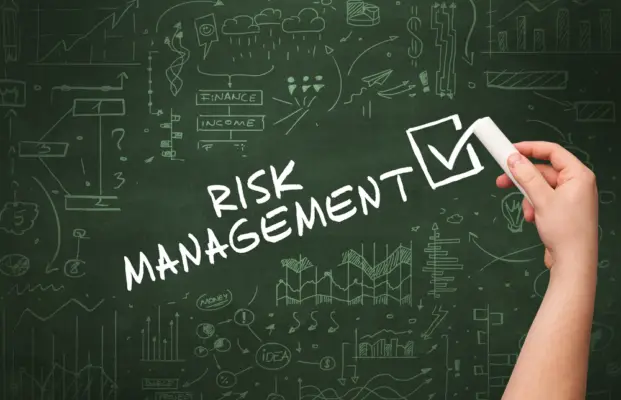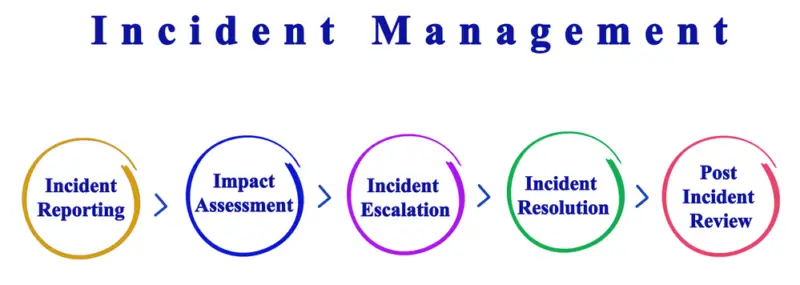A Risk Management Program is a systematic process of identifying, assessing, and responding to risks that might adversely affect realizing an organization’s objectives. It involves the development of strategies to manage risks and create a risk-aware culture within the organization.
The program typically includes the following steps:
- Risk Identification: This involves recognizing potential risks that could harm an organization. It could be operational, financial, strategic, or any other type of risk.
- Risk Assessment: Once risks are identified, they are assessed based on their potential impact and the likelihood of occurrence. This helps in prioritizing the risks.
- Risk Response Planning: This involves deciding how to handle each risk. The organization might choose to accept the risk, avoid the risk, reduce the risk, or share the risk with another party.
- Risk Monitoring and Review: This is an ongoing process where the organization monitors identified risks and reviews the effectiveness of the risk response plan. It also involves identifying new risks.
- Communication and Consultation: Effective communication and consultation should occur at all stages of the risk management process. Stakeholders should understand the risks and how they are being managed.
Risk management involves identifying potential risks that could impact the business, planning and implementing strategies to minimize them, and preparing for potential emergencies.
A risk management program can help businesses to identify potential hazards, reduce the likelihood of accidents and injuries, and mitigate the impact of unexpected events.
Implementing a risk management program requires careful consideration of various elements, such as workplace safety, environmental sustainability, and emergency preparedness.
Businesses can protect their employees, assets, and reputation by assessing potential risks and developing mitigation strategies.
This article will explore the key components of a risk management program, including insurance and coverage, workplace safety protocols, environmental sustainability practices, and emergency preparedness.

Protection and Planning
Effective risk management programs involve implementing insurance, health and safety laws, and cyber security to protect businesses from unexpected events. Insurance is a crucial component of risk management as it can protect a business from financial loss in the event of unforeseen circumstances.
Health and safety laws ensure a safe and secure working environment for employees, while cyber security helps to safeguard against cyber threats such as hacking or data breaches.
In addition to protection, risk management programs involve engaging in risk assessment and planning to minimize the impact of unexpected events. Risk assessment involves identifying and analyzing potential risks, while planning involves developing strategies to address those risks.
This can include creating contingency plans, establishing emergency procedures, and devising business continuity plans.
By planning ahead, businesses can minimize the impact of unexpected events and ensure a more seamless recovery process. Effective risk management programs prioritize workplace safety, mental health and well-being, environmental sustainability, and emergency preparedness.
By promoting a safe and healthy work environment, businesses can reduce the risk of accidents or injuries and improve employee morale and productivity. Prioritizing environmental sustainability can reduce waste and energy consumption, while emergency preparedness can minimize the impact of natural disasters or other unexpected events.
Finally, keeping communication channels open can help businesses stay informed of relevant news and developments, allowing them to adapt and respond quickly to any potential risks or challenges.
An effective risk management program involves a multifaceted approach incorporating protection and planning, workplace safety, mental health and wellbeing, environmental sustainability, and emergency preparedness.
Insurance and Coverage
Insurance coverage is a crucial component for businesses to mitigate potential financial losses in the event of unexpected events. To effectively manage risks, a business must identify potential threats and determine their risk level.
Insurance can provide financial protection for various risks, including property damage, liability claims, and employee injuries. When selecting insurance coverage, businesses should consider the specific risks they face and ensure they have adequate coverage to protect against potential losses.
Insurance policies can vary widely in their coverage and exclusions, so it is important to review the terms of any policies being considered carefully. Additionally, businesses should stay up-to-date on relevant health and safety laws, cyber security threats, and other potential risks to ensure they are adequately covered.
In addition to providing financial protection, insurance coverage can also be an important part of a broader risk management program. By working with insurance providers to identify potential risks and develop strategies for mitigating them, businesses can proactively address potential threats and reduce their exposure to financial losses.
Risk assessment and planning can help businesses identify areas of vulnerability and develop strategies for addressing them while ensuring they have the necessary insurance coverage to protect against potential losses.
Workplace Safety
Creating a safe workplace is crucial for ensuring employees’ physical and emotional well-being and minimizing the negative impact of workplace injuries and illnesses. A comprehensive risk management program must include a thorough risk assessment and planning process to identify potential hazards and develop mitigation strategies.
This should include regular inspections and assessments of the workplace, as well as implementing safety protocols, providing appropriate safety equipment, and ensuring employees are properly trained.
In addition to physical safety, mental health and well-being support should be integral to a workplace safety program. This can include providing access to mental health resources, offering stress-management techniques, and promoting a healthy work-life balance.
To further emphasize the importance of workplace safety, the following table illustrates the staggering cost of workplace injuries and illnesses in the United States in 2019, according to data from the Bureau of Labor Statistics.
By investing in workplace safety measures, businesses can save money on insurance and workers’ compensation claims and protect their most valuable asset—their employees.
| Type of Injury/Illness | Total Number of Cases | Days Away from Work | Median Days Away from Work | Cost (in billions) |
|---|---|---|---|---|
| Sprains, strains | 317,110 | 96,040 | 11 | $15.8 |
| Fractures | 157,090 | 54,880 | 14 | $14.2 |
| Cuts, lacerations | 160,070 | 78,160 | 7 | $2.9 |
| Respiratory conditions | 22,610 | 9,310 | 10 | $3.6 |
Workplace safety should be a top priority for all businesses. By conducting regular risk assessments, implementing safety protocols, and prioritizing employee wellbeing, businesses can minimize the negative impact of workplace injuries and illnesses while also saving money on insurance and workers’ compensation claims.
Environmental Sustainability
Reducing energy, water, and waste can benefit the environment and result in cost savings for businesses. One way for businesses to achieve this is through implementing an environmental sustainability program.
This involves conducting a risk assessment to identify areas where energy, water, and waste can be reduced.
For example, implementing energy-efficient lighting and appliances, reducing water usage through low-flow fixtures, and implementing recycling programs can all contribute to environmental sustainability while reducing costs.
Planning is a crucial aspect of an environmental sustainability program. Businesses need to identify specific goals and targets to reduce their environmental impact.
Developing a plan that outlines the steps necessary to achieve these targets can help businesses stay on track and measure their progress. This plan can also help businesses identify potential risks and develop mitigation strategies.
For example, if a business relies heavily on a single supplier for a particular resource, it may be at risk if that supplier experiences a disruption. Planning for alternative suppliers or diversifying supply chains can help mitigate this risk.
Insurance can also play a role in a business’s environmental sustainability program. Environmental liabilities can be costly, and having the right insurance coverage can help minimize the financial impact of any incidents.
Businesses can also consider purchasing insurance policies specifically addressing environmental risks, such as pollution liability insurance. Having insurance coverage can provide peace of mind and help businesses manage any unexpected events that may arise.
Emergency preparedness is also important for businesses pursuing environmental sustainability. Natural disasters or other emergencies can significantly impact a business’s ability to operate sustainably.
Developing a comprehensive emergency plan can help businesses minimize the impact of these events and quickly recover. This plan should include contingencies for environmental risks, such as leaks or spills, and plans for continuing sustainable operations during emergencies.

Emergency Preparedness
Emergency preparedness is an essential aspect of business operations that can help minimize the impact of unexpected events and ensure sustainable operations during emergency situations.
Preparing for emergencies can reduce the risk of business disruption, financial loss, and damage to physical assets. It involves identifying potential risks, assessing their likelihood and impact, and developing mitigation plans.
One of the key components of emergency preparedness is risk assessment. This involves identifying potential risks and evaluating their likelihood and impact.
Businesses can prioritize their preparedness efforts by conducting a risk assessment and allocating resources accordingly. It also helps businesses to develop contingency plans for different types of emergencies, such as natural disasters, cyber-attacks, or workplace accidents.
Another important aspect of emergency preparedness is communication channels. During an emergency, effective communication is critical for ensuring the safety of employees, customers, and other stakeholders.
Businesses should establish communication protocols and ensure all employees are trained to use them. This may involve developing an emergency notification system, establishing a chain of command, and regularly updating stakeholders.
The right insurance coverage can also help businesses recover from emergencies and minimize the financial impact.
| Key Considerations | Description | Example |
|---|---|---|
| Risk Assessment | Identify potential risks and evaluate their likelihood and impact. Prioritize preparedness efforts and allocate resources accordingly. | Conducting a risk assessment to identify potential risks and develop contingency plans. |
| Communication Channels | Establish communication protocols for effective communication during emergencies. Develop an emergency notification system and provide regular updates to stakeholders. | The right insurance coverage can help businesses recover from emergencies and minimize the financial impact. |
| Insurance | Ensuring the business has adequate insurance coverage for different types of emergencies, such as natural disasters or cyber attacks. | Ensuring the business has adequate insurance coverage for different types of emergencies, such as natural disasters or cyber-attacks. |
Emergency preparedness is a critical aspect of business operations that can help minimize the impact of unexpected events and ensure sustainable operations during emergency situations.
It involves conducting a risk assessment, developing contingency plans, establishing communication channels, and having the right insurance coverage.
By prioritizing emergency preparedness efforts and allocating resources accordingly, businesses can minimize the financial impact of emergencies and ensure the safety of employees, customers, and other stakeholders.
Frequently Asked Questions
What common risks can businesses face that can be addressed through a risk management program?
Common business risks include accidents, natural disasters, cyber-attacks, employee misconduct, and supply chain disruptions. A risk management program can identify, assess, and mitigate these risks through various strategies such as insurance, safety protocols, and emergency preparedness plans.
How can businesses effectively prioritize and assess risks to plan and prepare for unexpected events?
Businesses can prioritize and assess risks by identifying potential events and their likelihood and impact, evaluating current controls, and determining the cost-benefit of implementing additional measures. This enables effective planning and preparation for unexpected events.
What key factors to consider when selecting insurance coverage for a business, and how can this help mitigate risks?
Appropriate insurance coverage requires considering the business’s potential risks, liability, and financial exposure. By mitigating risks through insurance, businesses can protect themselves from potential losses and maintain financial stability during unexpected events.
What practical steps can businesses take to improve workplace safety and reduce the risk of injuries or illnesses?
Practical steps for improving workplace safety and reducing injuries or illnesses include: identifying hazards, providing proper training and equipment, enforcing safety protocols, promoting a safety culture, and regularly reviewing and updating safety procedures.
How can businesses balance the need for profitability with environmental sustainability goals, and what are some strategies for reducing waste and conserving energy?
Businesses can balance profitability with environmental sustainability by implementing strategies such as reducing waste, conserving energy, and using sustainable materials. This can save money, improve brand reputation, and attract eco-conscious customers.

Conclusion
A risk management program is vital to any business, as it identifies and mitigates potential risks.
Through a comprehensive risk assessment process, businesses can identify potential sources of risk and develop strategies to minimize their impact. This can include insurance coverage, workplace safety protocols, and environmental sustainability practices.
Additionally, implementing an emergency preparedness plan can help businesses respond quickly and effectively during unexpected events.
By prioritizing risk management, businesses can protect their employees, assets, and reputation while ensuring operations continuity.
A well-designed risk management program can help businesses navigate uncertain and unpredictable environments and ultimately contribute to long-term success.

Chris Ekai is a Risk Management expert with over 10 years of experience in the field. He has a Master’s(MSc) degree in Risk Management from University of Portsmouth and is a CPA and Finance professional. He currently works as a Content Manager at Risk Publishing, writing about Enterprise Risk Management, Business Continuity Management and Project Management.

